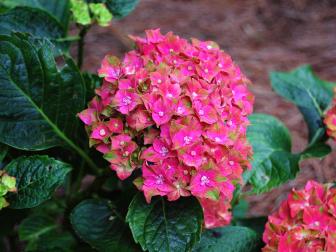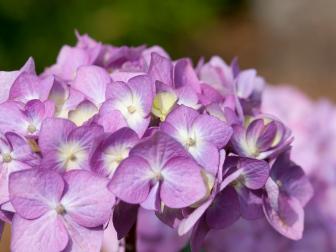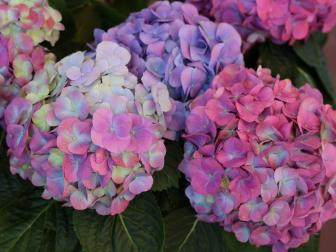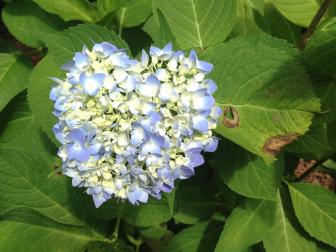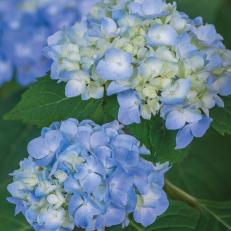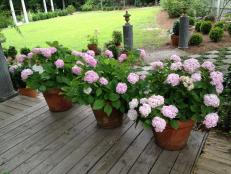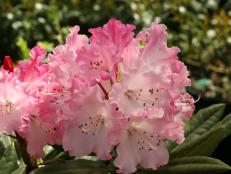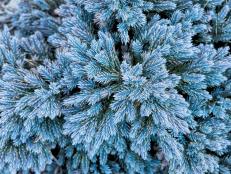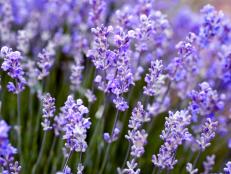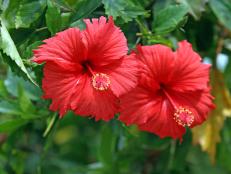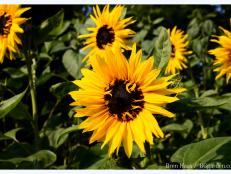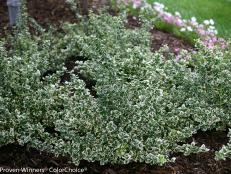How to Plant, Grow and Care for Hydrangeas
No garden’s complete without this old-fashioned favorite, and new varieties make hydrangeas easier than ever to grow.
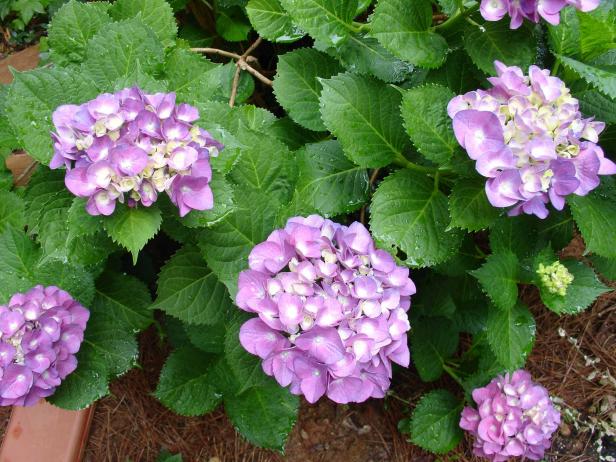
Image courtesy of Lynn Coulter

Hydrangeas are a classic garden plant beloved for their immense flowerheads and old-fashioned charm. They’ve had a big comeback as people rediscover the plants of their grandparents’ generation. New hydrangea varieties available nowadays are a lot easier to grow than the older ones, which were picky about being pruned. When cut back at the wrong time of year, you wouldn’t get any flowers the following year, because they produced buds on old wood. Even if the weather cooperated, you could still count on only one burst of flowers in May or June.
New varieties will bloom repeatedly throughout summer; others will bloom on new growth as well as the old wood as long as they're watered. You get hydrangeas, but with less hassle.
All About Hydrangeas
There are six species of hydrangeas that are commonly grown in American gardens: bigleaf (Hydrangea macrophylla), the most common; smooth (Hydrangea arborescents); panicle (Hydrangea paniculate); oakleaf (Hydrangea quercifolia); climbing (Hydrangea anomala ssp. Petiolaris); and mountain (Hydrangea serrata). Most are natives of Asia, but some are native to the United States.
54 Gorgeous Hydrangea Varieties 59 Photos
This beautiful flowering shrub can add color and abundance to your garden.
Within those species are hundreds of named selections of hydrangea, but all of them come in two basic bloom types: Mophead hydrangeas, which have round, globe-like flower heads; and lacecap hydrangeas, which have flattened, loosely arranged flower heads. Hydrangeas are famously able to change their bloom color based on soil conditions, with acidic soil turning pink, purple, light blue and red blooms into a rich shade of blue coveted by gardeners. Only three species can pull off this feat, and even they can’t change colors if the blooms started out white. Hydrangeas make beautiful cut flowers, living for a week in a vase.
Hydrangea comes in three forms: vine, shrub and tree. Yep, there’s such a thing as a hydrangea vine that can be grown as a groundcover or trained to grow on a trellis or fence. A hydrangea tree is a giant shrub that can be pruned into a tree. It grows to heights of at least 20 feet and blooms later in the summer than other forms of hydrangea.
Botanical Name: Hydrangea sp.
Common Name: Hydrangea
Hardiness Zones: 3 to 11
Bloom Time: Late spring to late summer
How To Plant Hydrangeas
- Hydrangeas’ light needs depend on the variety. But most of them like morning sun and dislike the blazing heat of the afternoon. Most people plant them along a fence or their house so they’re protected from too much light.
- Plant in spring or fall, when temperatures are mild.
- They prefer rich, well-drained soil.
- Hydrangeas can get as tall as 20 feet and as wide as 15 feet, so put your plant where it will have room to spread out.
- Learn how to propagate hydrangeas.
When is The Best Time to Plant Hydrangeas?
Bring home the beauty of hydrangeas by adding a bush — or three! — to your yard.
Hydrangea Care Tips
- Hydrangeas need regular watering to keep blooming throughout the season. If they’re getting less than an inch of rain per week, you’ll need to water them by hand.
- Water three times a week deeply for the first couple of years to encourage root growth. But don’t let water stand around your plants because hydrangeas are prone to root rot.
- Fertilize once a year with a balanced, slow-release fertilizer, or fertilize twice a year with 10-10-10. Commercial manure or compost is an organic alternative.
- Deadhead hydrangeas to keep them blooming all season.
- Stop feeding by August to let your hydrangea get ready to sleep for the winter.
- Don't prune hydrangeas. Let them get big and airy. Nearly all varieties look best when you just let them be.
- To change the colors of bigleaf hydrangea blooms, lower the soil pH by adding sulfur, peat moss or aluminum sulfate to the soil throughout the growing season.
How to Change Hydrangea Color
Find the secret to changing the hue of these popular blooms.
Hydrangea Pests and Diseases
Hydrangeas are considered pest- and disease-resistant, which is one of the reasons they’re so popular. But any plant can get sick. Here’s what to look for, and here’s how to treat each problem:
Buy Supplies
Powdery mildew can show up on leaves, causing them to droop. While it’s ugly, powdery mildew won’t kill your plants. You can spray with Neem oil or just remove the diseased leaves to keep it from spreading to the rest of the plant.
Rust and leaf spot, and fungal diseases, can make leaves discolor and drop off. Treat with a fungicide.
Japanese beetles will chew holes in the leaves and nearly invisible spider mites will cause deformed growth. Aphids will suck the sap from buds.
A Hydrangea Problems Primer
Stop hydrangea pests and diseases in their ugly little tracks with this easy-to-follow guide.
Recommended Types of Hydrangeas
Bigleaf hydrangea, also called mopheads or French hydrangeas, are the classic ones you see on magazine covers and in florist bouquets. They’re a large shrub, growing up 10 feet tall with a 10 foot spread. They like shade and will wilt in too much direct, hot sun. Bloom colors can be white, pink, blue, purple or red, and you can change the colors by adjusting the soil pH. Popular varieties to look for: Endless Summer hydrangea collection, 'Nikko Blue, 'Tokyo Delight.'
Buy Hydrangeas
Oakleaf hydrangea is an old-fashioned plant that’s native to the Southeastern U.S. and hardy to USDA Zone 4. It produces huge panicles of flowers throughout the summer and big plants that get 10 feet tall and wide. Its leaves turn red in the fall, giving your garden late season foliage color. Some cultivars to look for include 'Alice,' 'Amethyst,' 'Pee Wee,' and 'Snow Queen.'
Panicle hydrangea grow huge, up to 15’ high and 12’ wide, and can be grown as a shrub or a tree, depending on how prune. They produce white, cone-shaped flowerheads. They’re the most winter-hardy, living in USDA Zone 3 where temps go 30 below. Common selections: ‘Limelight,’ ‘Grandiflora,’ 'Vanilla Strawberry' and 'Pinky Winky.'
Smooth hydrangea are smaller plants, only reach 3' to 5' in height. They’re native to the Eastern United States and since they bloom on new growth, they need to be pruned to the ground each winter to encourage new growth. Common selections: ‘Annabelle,’ 'Incrediball' and 'Invincibelle Spirit.'
Climbing hydrangea is a vine that can be used as a groundcover or trained to grown on a trellis, fence or wall. It can grow up to 30 feet tall and produces white lacecap flowers. Good selections to try are ‘Miranda’ or ‘Firefly,’ which has variegated leaves.
Mountain hydrangea is a small shrub, reaching 2' to 4' tall and wide, that produces pink or blue lacecap flowers on old wood. It’s a good choice for containers or small spaces. Selections to try: ‘Blue Billow,’ ‘Tuff Stuff’ and ‘Bluebird.’
Garden Design With Hydrangeas
- Line a garden path
- Use hydrangeas as a privacy hedge.
- Add them to perennial beds for structure and height.
- Use along a wall against the house as foundation plant.
- Grow them in a pot.
- Use as a specimen plant.
- Use a hydrangea vine as groundcover or train it to grow on an arbor or trellis.
Landscaping With Hydrangeas 13 Photos
Line a garden path, tame an eroding slope, or tuck them into fairy gardens — hydrangeas are versatile and easy to grow in your landscape.


.-Battle-on-the-Beach-courtesy-of-HGTV.-.jpg.rend.hgtvcom.196.196.suffix/1714761529029.jpeg)




